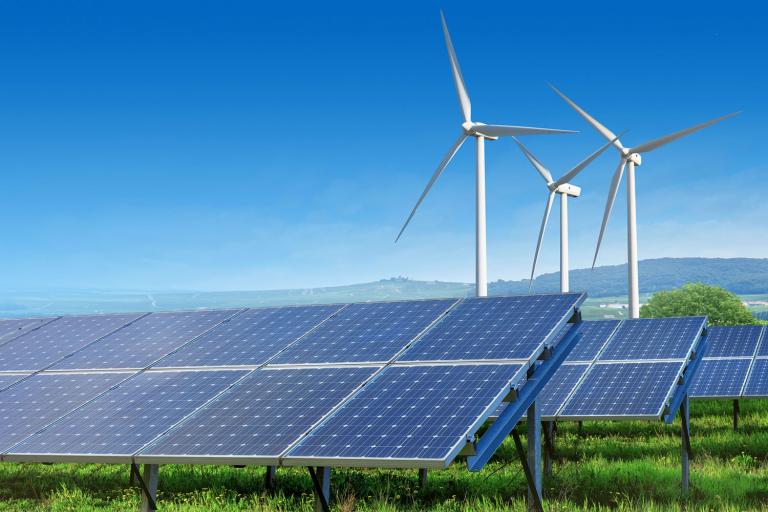Kazakhstan is rapidly cementing itself as Central Asia’s clean energy leader through ambitious renewable energy projects backed by major international partnerships. The nation’s largest renewable energy initiative, involving strategic cooperation between Kazakhstan, French energy giant TotalEnergies, and Chinese companies including Envision Energy, is shaping the future energy landscape. This 1-gigawatt (GW) Mirny Wind Farm, complemented by cutting-edge battery storage technology, promises to supply clean power to over one million households while significantly reducing carbon emissions. This article delves deep into the project’s background, technology, multinational cooperation, economic and environmental impacts, and how it fits within Kazakhstan’s broader renewable energy strategy and climate goals.
Table of Contents
Kazakhstan Renewable Energy Ambitions
Kazakhstan has set ambitious targets to increase its renewable energy share to 15% by 2030 and achieve carbon neutrality by 2060. Currently, renewables provide a rising share of the national power mix, with over 150 renewable facilities operating, predominantly in wind, solar, and hydropower. The government’s commitment is reflected in policies encouraging investment, advanced auctions for renewable projects, and multi-billion-dollar partnerships focusing on sustainable energy infrastructure.
The government’s Energy Ministry, led by Minister Yerlan Akkenzhenov, has actively pursued cooperation with key global partners to develop renewable energy capacities, diversify the energy mix, and modernize the grid.
The Mirny Wind Farm: The Nation’s Largest Renewable Energy Project
Project Overview
The Mirny Wind Farm, located near the village of Mirny in Kazakhstan’s Zhambyl region, is being developed by Aktas Energy—a joint venture of TotalEnergies, Samruk-Energo JSC, and KazMunayGas. Envision Energy, a global leader in green technology, supplies 124 advanced 6.5 MW wind turbines engineered for the region’s challenging steppe wind conditions.
Key Features
Capacity: 1 GW, producing roughly 4 billion kWh annually
Household Power: Enough to power over one million homes
CO2 Emission Reduction: Projected prevention of nearly 3.5 million tons of CO2 emissions yearly
Integrated Battery Energy Storage: A 300 MW/600 MWh Battery Energy Storage System (BESS) enhances grid stability and energy security
Project Timeline
The first turbines are expected by late 2026 with construction commencing concurrently. The project’s hybrid wind and battery storage design marks a technological leap, addressing variability in wind supply and ensuring reliable power delivery.
Multinational Cooperation: Kazakhstan, France, and China
Kazakhstan-China Partnership
Kazakhstan-China cooperation is central to the project and broader renewable energy development. During President Tokayev’s visit to China in 2025, agreements were signed for multiple renewable projects including a 300 MW solar power plant in the Turkestan region and a 160 MW combined-cycle power plant in Aktau. Chinese companies are also active in wind turbine manufacturing within Kazakhstan, strengthening local industry and supply chains.
China’s investment facilitates industrialization while supporting Kazakhstan’s energy transition goals, contributing substantial job creation and technology transfer.
The French Connection: TotalEnergies’ Role
French energy giant TotalEnergies is a key partner through its joint venture involvement in Aktas Energy. Their expertise in renewables complements Kazakhstan’s ambitions by bringing cutting-edge technology, financing, and operational experience crucial for large-scale projects.
The Mirny Wind Farm represents France’s largest renewable energy cooperative project in Central Asia, aligning with global decarbonization commitments and supporting TotalEnergies’ portfolio diversification.
Strategic Synergy
This three-nation synergy leverages each partner’s strengths—Kazakhstan’s natural wind resources and policy support, China’s manufacturing capabilities and investment, and France’s technological and financial acumen—to ensure project success and scalability.
Technology and Environmental Impact
Advanced Wind Turbines
The deployment of Envision’s 6.5 MW turbines, optimized for Kazakhstan’s wind regimes, exemplifies technological innovation. These turbines improve energy capture efficiency and offer robustness in diverse weather conditions prevalent in the steppe region.
Battery Energy Storage System
The integrated 300 MW/600 MWh BESS is critical for managing intermittency issues inherent in wind energy. It ensures steady power output, supports grid frequency regulation, and enhances energy resilience, embodying a modern approach to renewable integration.
Carbon Neutrality Pathway
By generating clean electricity and reducing reliance on fossil fuels, the Mirny Wind Farm is pivotal to shrinking Kazakhstan’s carbon footprint. The reduction of 3.5 million tons of CO2 emissions annually significantly contributes to Kazakhstan’s national carbon neutrality target for 2060.
Economic and Social Benefits
Job Creation: The project is expected to create hundreds of direct employment opportunities during construction and operations, plus ancillary jobs in manufacturing and services.
Investment Inflows: It attracts large-scale foreign direct investment and enhances Kazakhstan’s position as a renewable energy investment hub.
Energy Security: By diversifying energy sources beyond fossil fuels, Kazakhstan bolsters its national energy security and regional energy leadership.
Community Development: Sustainable energy infrastructure enhances local economic development and quality of life for surrounding communities.
Kazakhstan’s Broader Renewable Energy Strategy
The Mirny Wind Farm fits within a wider framework of nine renewable projects planned for 2025 alone, totaling significant capacity additions. The government has advanced auction mechanisms promoting competitive yet sustainable renewable projects across wind, solar, hydro, and biomass sectors.
Challenges and Future Outlook
Challenges
Grid Integration: Expanding renewables requires upgrades to transmission and distribution infrastructure.
Financing and Regulation: Ensuring continual investment and clear regulatory frameworks remains critical.
Local Capacity Building: Developing skilled labor and local supply chains to support ongoing growth.
Outlook
Kazakhstan renewable energy collaborations portend continued growth, with future projects likely expanding capacity and incorporating cutting-edge technologies like green hydrogen and smart grids. The tri-national partnership model here serves as a replicable template for regional cooperation in clean energy.
FAQs
Q1: What is the capacity of Kazakhstan’s largest renewable energy project?
The Mirny Wind Farm has a capacity of 1 gigawatt (GW), making it Kazakhstan’s largest renewable energy project.
Q2: Which countries are involved in the Mirny Wind Farm project?
Kazakhstan, France (through TotalEnergies), and China (through Envision Energy and other partners) are collaboratively advancing the project.
Q3: What type of renewable energy technology is used in this project?
The project utilizes advanced 6.5 MW wind turbines complemented by a large-scale battery energy storage system (300 MW/600 MWh BESS).
Q4: When is the project expected to start operation?
Construction is scheduled to start in late 2026, with turbine installation and commissioning following soon after.
Q5: How does this project impact Kazakhstan’s climate goals?
By generating clean energy and reducing carbon dioxide emissions by around 3.5 million tons annually, it significantly supports Kazakhstan’s target of 15% renewable energy by 2030 and carbon neutrality by 2060.
Conclusion
Kazakhstan’s collaboration with France and China on the Mirny Wind Farm exemplifies transformative multinational cooperation in renewable energy. This ambitious project not only advances Kazakhstan’s clean energy ambitions but also sets a powerful precedent for regional and global efforts toward a sustainable energy future.










